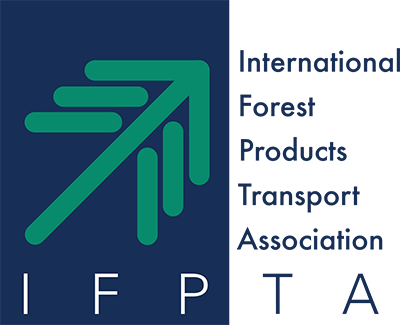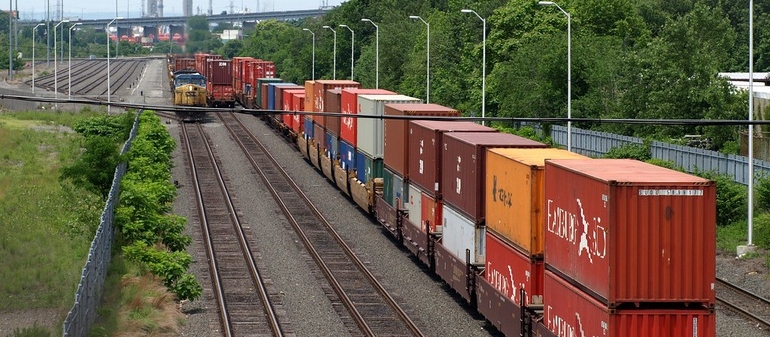AI is reshaping transportation. Railroads can get on board or miss outWill policy challenges derail freight rail's progress toward a sustainable future?
The following is an opinion piece written by Ian Jefferies, president and CEO of the Association of American Railroads and published in Supply Chain Drives. Opinions are the author's own. Feb. 7, 2020 - The White House recently issued draft principles for governing the use of artificial intelligence across sectors, including transportation. While a recent report noted the guidance may be too vague to produce substantive benefits, the larger point is clear. Various forms of AI are here to stay and will only become more ubiquitous. That is unless public policymakers go to great lengths to inhibit progress. The industry I represent, one of America's oldest industries – privately owned freight railroads – stands in the crosshairs of this very discussion. At issue rests a fundamental question that Silicon Valley innovators likely never contemplate: can established industries, such as freight rail, reimagine themselves through technology in an era of massive disruption? As upstarts like Hyperloop One or the truck platooning company Peloton seek market entry, can freight rail deploy AI-like technologies that boost safety performance and productivity, and in turn maintain or grow market share? Or, will narrow debates – such as an ongoing regulatory dispute over the number of people needed in a locomotive cab – derail progress toward a sustainable future? For freight railroads, which invest billions to maintain and modernize private networks, these questions are being answered in real time. "The U.S. rail industry and the multi-billion dollar infrastructure it supports is well positioned to capture the benefits of new technologies that will automate systems to improve safety and provide better value to consumers," according to a report from the R Street Institute and TechFreedom. Many technological solutions are already online, because a safe network is in the best interest of carriers and their customers. In fact, a single train has a wide network of people and technology monitoring its status and performance that goes beyond having one or two people in the locomotive cab. "Continued evolution for large U.S. freight railroads, however, will be near impossible with two hands tied behind their back. The market won't wait." While a car or a truck may use cameras, speed controls and advanced warning systems, railroads already deploy an all-of-the-above arsenal that provides dozens, if not hundreds, of checks on a single unit. It is akin to the "smart infrastructure" mentioned when discussing autonomous vehicles. For instance, railroads are in the final stretch of implementing Positive Train Control, or PTC, on much of the mainline network. This anti-crash technology, made possible through a private wireless network and GPS mapping, will help prevent incidents caused by human error, including train-to-train collisions and derailments caused by excessive speed. In addition, railroads use a time-tested tool known as a "locomotive alerter" that requires the train operator to confirm every minute he or she is driving the train. Failure to do so causes a train to shut down, thus ensuring even trains operated with only one person have attentive operators and are safe. At the same time, track geometry cars can constantly monitor track integrity, and rely on a network of sensors to inspect infrastructure and equipment in real time. Coupled with big data analysis, these tools supplement traditionally manual functions and are proving better than human operators at identifying issues before they arise. These digital tools provide an additional layer of oversight as railroads deploy ground personnel throughout the network to monitor trains and communication systems remotely. While automated technologies have and will continue to change the rail workforce ... innovation in the sector and across the economy will be a net positive for the economy." Common ground between management and labor should reflect these realities without barring the industry from deploying assets and people in the most sensible way in the future. After all, the Federal Railroad Administration – the regulator responsible for ensuring rail safety – recently ruled there is no need for regulation mandating minimum crew sizes. In the more highly-regulated European environment, most freight trains operate with one person, while in Australia there is a long-distance freight train that is fully autonomous. Many smaller railroad companies in the U.S., and almost all passenger carriers, deploy only one person in the locomotive cab. Indiana Railroad, for instance, runs over one-third of its operations with one person in the locomotive and maintains a sterling safety record after more than 20 years of doing so. "Continued evolution for large U.S. freight railroads, however, will be near impossible with two hands tied behind their back. The market won't wait." An inability to ultimately deploy one-person crews would "exclude freight rail from the increased productivity of the digital age, even with the widespread anticipation of self-driving cars and semis," Elliott Long, a policy analyst at the Progressive Policy Institute said in a Medium post. In short, the freight rail industry should be able to gradually transition from two people in the locomotive of the cab to one onboard crewmember with the support of in-cab technology and on-the-ground conductors. While automated technologies have and will continue to change the rail workforce – as they have for decades alongside safety gains – innovation in the sector and across the economy will be a net positive for the economy. Railroads take trucks off roads, reducing infrastructure damage and carbon emissions in the process and. U.S. freight railroads can, on average, move one ton of freight more than 470 miles per gallon of fuel, making rail the most environmentally friendly way to move freight over land. Railroads are reimagining the way they move freight, hoping to reach new safety levels, meet burgeoning demand and increase customer service. Technology is at the core of this effort. The public should support more innovation, not less. SOURCE: Supply Chain Drive |

